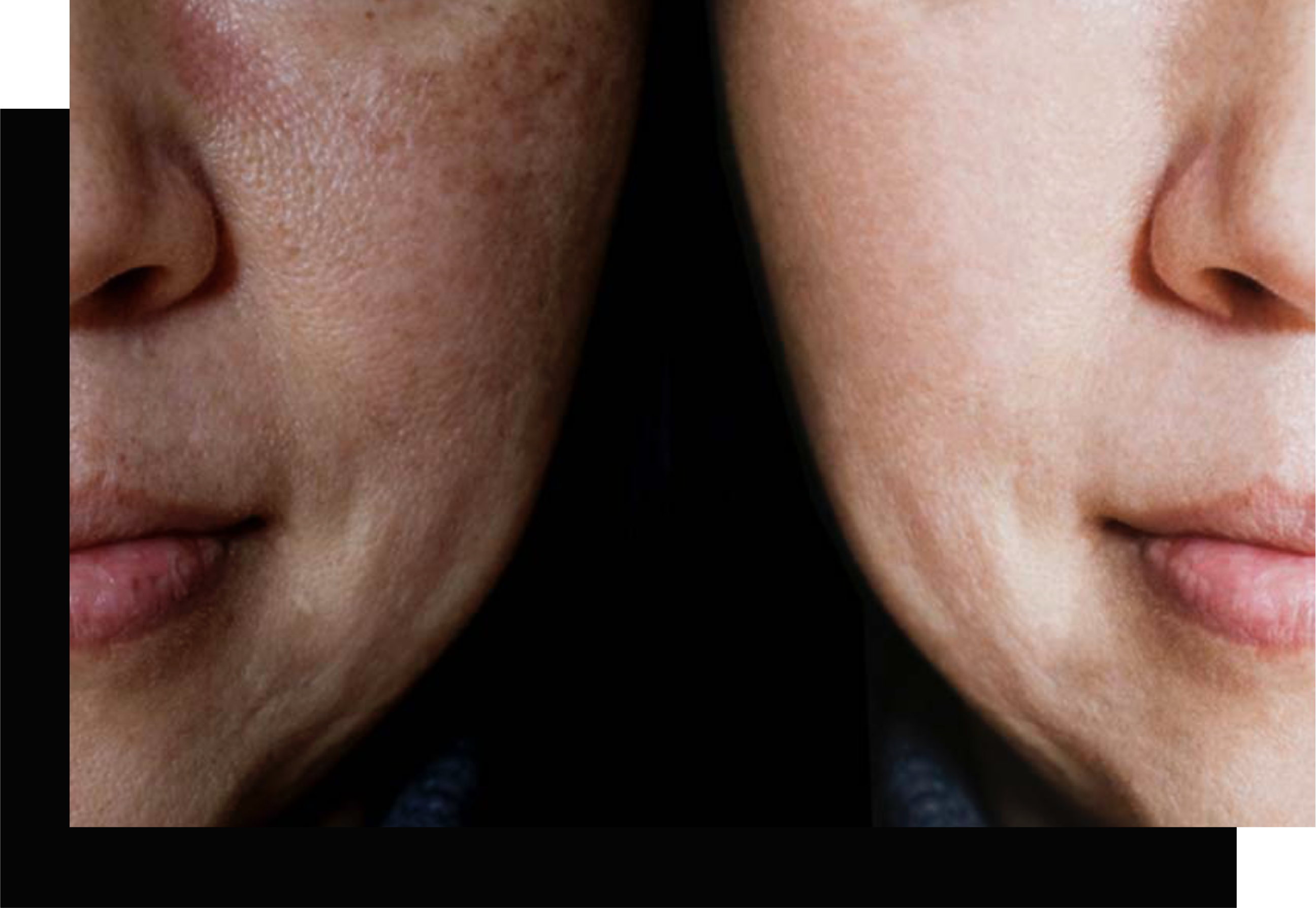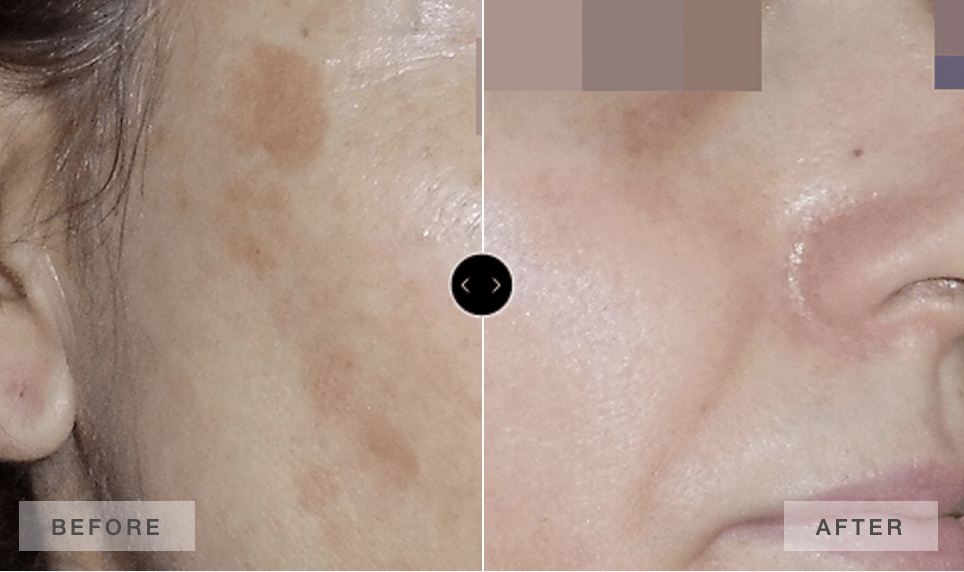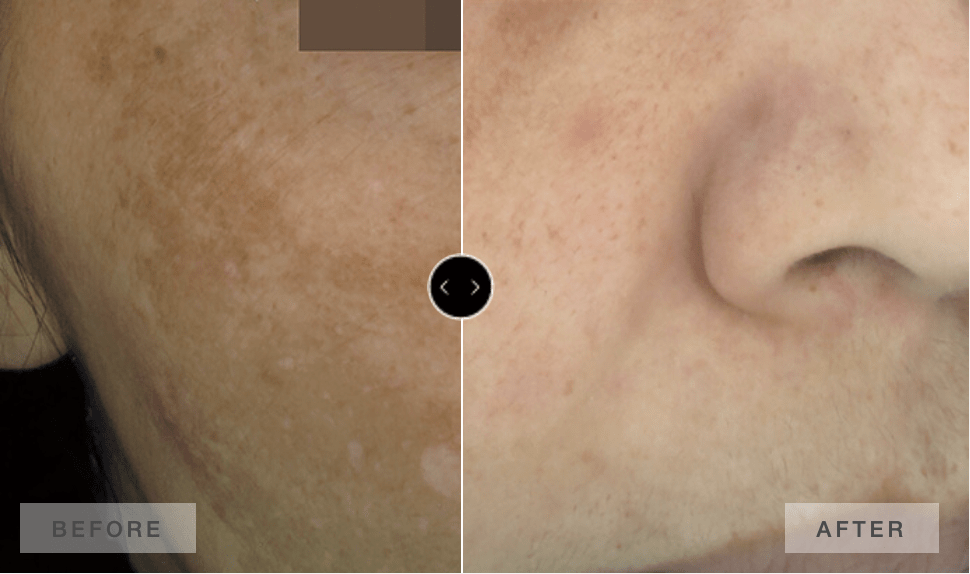WHAT IS IT? WHAT ARE THE CAUSES, SYMPTOMS AND SIGNS?
Melasma is a very common patchy brown, tan, or blue-gray facial skin discoloration, usually seen in women in the reproductive years. It typically appears on the upper cheeks, upper lip, forehead, and chin of women 20-50 years of age. It is uncommon in males. It is thought to be primarily related to external sun exposure, external hormones like birth control pills, and internal hormonal changes as seen in pregnancy. Most people with melasma have a history of daily or intermittent sun exposure, although heat is also suspected to be an underlying factor. Melasma is most common among pregnant women, especially those of Latin and Asian descent. People with olive or darker skin, like Hispanic, Asian and Middle Eastern individuals, have higher incidences of Melasma.

TREATMENT SOLUTION – COSMELAN



